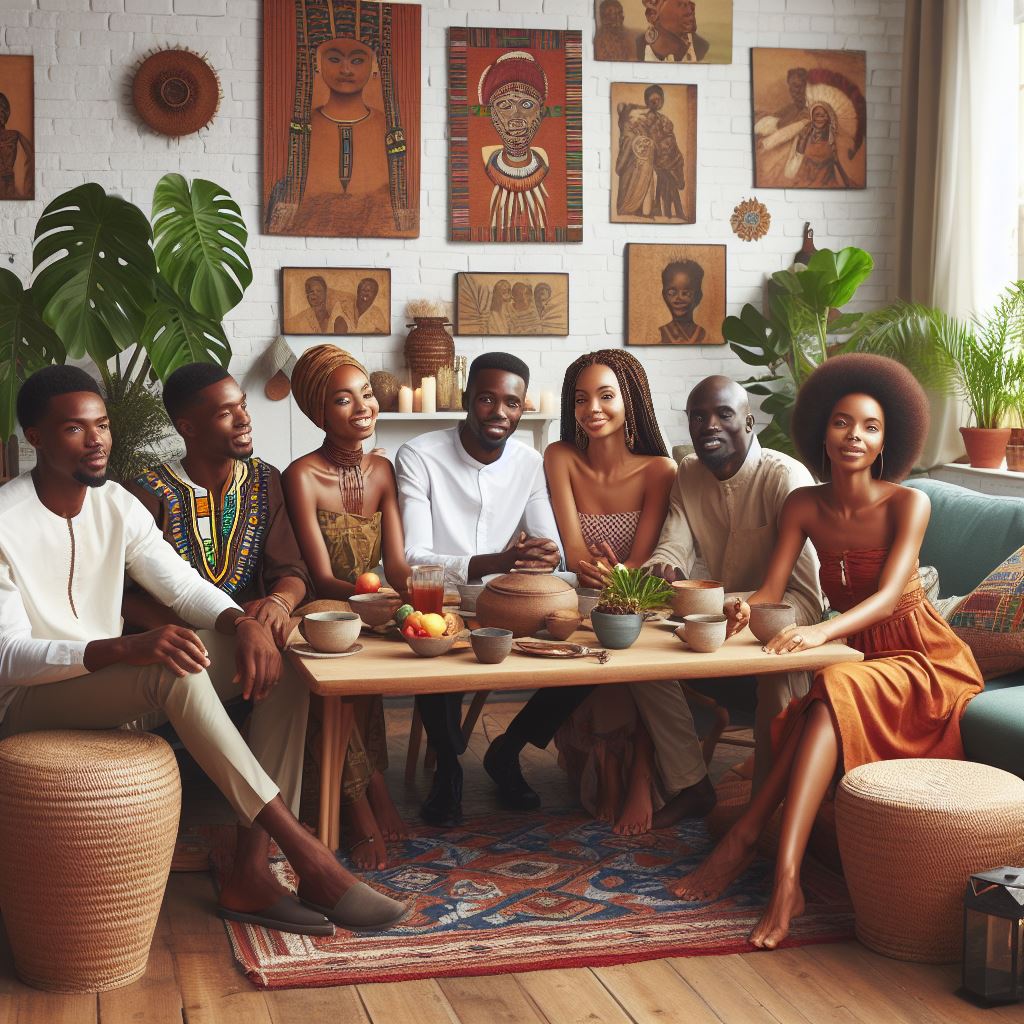Communal living refers to a type of shared living arrangement where individuals or families live together in a shared space or community, often with a shared goal or vision. It involves sharing resources, responsibilities, and activities, and can take many forms, such as:
1. Intentional communities: Planned communities with a shared purpose or ideology, like ecovillages or spiritual communities.
2. Communes: Shared living spaces where resources are pooled and decisions are made collectively.
3. Cooperative living: Shared housing or apartments where residents share responsibilities and resources.
4. Shared housing: Shared living spaces, like roommates or housemates, who share expenses and responsibilities.
5. Village living: Traditional village settings where residents share resources and support each other.
6. Ecovillages: Communities focused on sustainable living, environmentalism, and social cohesion.
7. Cohousing: Planned communities with shared common spaces and resources.
8. Communal apartments: Shared living spaces, like kibbutzim or student housing, where resources are shared.
Communal living can offer benefits like:
– Shared expenses and resources
– Social support and connection
– Shared responsibilities and chores
– Opportunities for skill-sharing and learning
– Sense of community and belonging
– Environmental sustainability
– Economic benefits
However, communal living also requires:

– Compromise and flexibility
– Communication and conflict resolution skills
– Shared decision-making and responsibility
– Respect for individual boundaries and privacy
Overall, communal living is a shared living arrangement that fosters social connection, resource sharing, and a sense of community.
Here are some reasons why some people believe we need to go back to communal living in Nigeria and Africa:
1. Sense of community: Communal living fosters a strong sense of community and belonging, which is essential for our well-being and happiness.
2. Shared resources: Sharing resources and skills strengthens social bonds and reduces individual burdens.
3. Cultural preservation: Communal living helps preserve traditional customs, languages, and values.
4. Support system: Communal living provides a built-in support system for individuals and families in need.
5. Environmental sustainability: Communal living can promote sustainable practices and reduce waste.
6. Economic benefits: Shared resources and skills can reduce poverty and improve economic stability.
7. Social cohesion: Communal living promotes social cohesion and reduces social conflicts.
8. Preservation of traditional skills: Communal living helps preserve traditional skills and knowledge.
9. Improved mental health: Communal living can reduce stress and improve mental health.
10. Connection to heritage: Communal living connects us to our heritage and cultural identity.
However, it’s important to note that communal living also has its challenges, such as potential conflicts and loss of individual autonomy. A balanced approach that incorporates the benefits of communal living while respecting individual rights and freedoms is crucial.
Some advantages of communal living
*1. Sense of Community
In today’s fast-paced, individualistic society, many people feel disconnected and isolated. Communal living offers a sense of community and belonging, which is essential for our well-being and happiness. Living among others who share similar values and goals creates a supportive environment where individuals can thrive.
*2. Shared Resources
Sharing resources and skills strengthens social bonds and reduces individual burdens. In communal living, individuals can pool their resources, expertise, and labor to achieve common goals. This sharing economy reduces waste, saves time, and increases efficiency.
*3. Cultural Preservation
Communal living helps preserve traditional customs, languages, and values. By living together and sharing experiences, community members can pass down cultural heritage to younger generations. This ensures the continuation of rich cultural traditions and historical knowledge.
*4. Support System
Communal living provides a built-in support system for individuals and families in need. Whether it’s childcare, healthcare, or emotional support, community members can rely on each other during difficult times.
*5. Environmental Sustainability
Communal living can promote sustainable practices and reduce waste. By sharing resources and living in close proximity, individuals can reduce their carbon footprint, conserve energy, and adopt eco-friendly habits.
*6. Economic Benefits
Shared resources and skills can reduce poverty and improve economic stability. Communal living encourages collaboration, innovation, and entrepreneurship, leading to new economic opportunities and growth.
*7. Social Cohesion
Communal living promotes social cohesion and reduces social conflicts. By living together and working towards common goals, individuals develop empathy, understanding, and tolerance, fostering a harmonious community.
*8. Preservation of Traditional Skills
Communal living helps preserve traditional skills and knowledge. Elders can share their expertise with younger generations, ensuring the continuation of essential skills like farming, craftsmanship, and traditional medicine.
*9. Improved Mental Health
Communal living can reduce stress and improve mental health. The sense of belonging, support, and connection with others can help alleviate anxiety, depression, and other mental health issues.
*10. Connection to Heritage
Communal living connects us to our heritage and cultural identity. By living among others who share our history and traditions, we can deepen our understanding of our roots and preserve our cultural legacy.

Communal living offers numerous benefits for individuals, communities, and society as a whole. By embracing this traditional way of living, we can build stronger, more supportive communities, preserve our cultural heritage, and promote environmental sustainability. Let’s rediscover the value of communal living and work towards a more harmonious, connected future.
Communal living refers to a type of shared living arrangement where individuals or families live together in a shared space or community, often with a shared goal or vision. It involves sharing resources, responsibilities, and activities, and can take many forms, such as:
1. Intentional communities: Planned communities with a shared purpose or ideology, like ecovillages or spiritual communities.
2. Communes: Shared living spaces where resources are pooled and decisions are made collectively.
3. Cooperative living: Shared housing or apartments where residents share responsibilities and resources.
4. Shared housing: Shared living spaces, like roommates or housemates, who share expenses and responsibilities.
5. Village living: Traditional village settings where residents share resources and support each other.
6. Ecovillages: Communities focused on sustainable living, environmentalism, and social cohesion.
7. Cohousing: Planned communities with shared common spaces and resources.
8. Communal apartments: Shared living spaces, like kibbutzim or student housing, where resources are shared.
Communal living can offer benefits like:
– Shared expenses and resources
– Social support and connection
– Shared responsibilities and chores
– Opportunities for skill-sharing and learning
– Sense of community and belonging
– Environmental sustainability
– Economic benefits
However, communal living also requires:
– Compromise and flexibility
– Communication and conflict resolution skills
– Shared decision-making and responsibility
– Respect for individual boundaries and privacy
Overall, communal living is a shared living arrangement that fosters social connection, resource sharing, and a sense of community.


No Comments